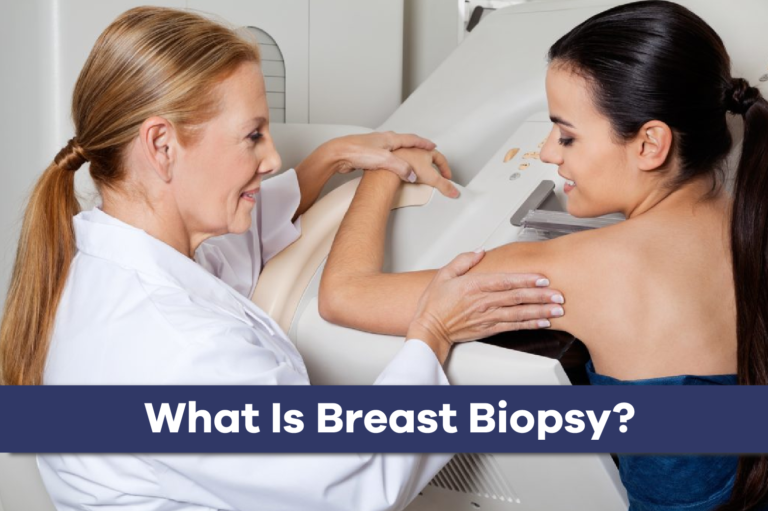Biopsy
A biopsy is a medical test and the process involves the extraction of sample cells or tissues for examination to determine the presence or extent of a disease.
Types of Biopsy
- Needle Biopsy
- Surgical Biopsy
Needle Biopsy
- It is equal to minimally invasive
- Takes 10-60 mins
- Removes small tissue sample
- Done under local anesthesia
- Little scarring or pain
Surgical Biopsy
- Accurate tissue sampling can be achieved
- Small risks
- Removes a large amount of tissue sample
- Done under local anaesthesia
Types of Needle Biopsies
- Fine Needle Aspiration Biopsy (FNAB)
- Core Needle biopsy
- Directed vacuum-Assisted biopsy (DVAB)
Fine Needle Aspiration Biopsy
It is the least invasive and uses a very narrow needle to remove a small amount of tissue or fluid. It is the fastest and easiest method of breast biopsy, which only takes a few seconds, as it doesn’t require stitches, therefore, leaves no scar. The disadvantage of FNAB is that for non-cystic lumps those not comprised entirely of fluid it provides only a small sample to be analysed. Not having enough tissue to examine under the microscope could lead to an incomplete diagnosis.
Core Needle Biopsy
Take an intermediate-sized sample of tissue. It requires a small nick about half the length of a grain of rice to be made in the skin. This nick is dressed with a special bandage afterward so a skin stitch is not usually required. A core needle biopsy removes more tissue than FNAB and typically takes several samples.
Vacuum Assisted Breast Biopsy
Takes several samples. Use a core needle that incorporates a vacuum to increase the amount of tissue obtained with each sample, typically multiple samples are taken to sufficiently analyse because this method takes a large amount of tissue and might end up taking the majority of the breast lump which would make finding the same area again later quite difficult in most cases. Therefore, a small metallic clip is placed inside the breast after the biopsy to mark the location of the breast lump. The clip marker is left inside the breast and causes no pain or harm.
Surgical Biopsy
It yields the largest tissue sample of all the biopsy methods and has been called the gold standard of biopsy while surgery may be the best choice for some patients. It does have disadvantages. Surgery may require skin stitches as it may leave a scar, it carries a slightly high risk than that of needle biopsy and requires a longer period of recovery. Choosing a Biopsy Method. Suitability depends on:
- Type, size, appearance, location of the abnormality
- Preference of physician
- Availability of procedure, staff
- Medical history
Instructions for biopsy
- Follow instructions on eating, drinking, and medication
- Let your doctor know if you are on any blood-thinning medication
- Arrange for a ride home
- Wear comfortable clothing
- No powder, deodorant, lotion, or perfume
Results
Samples are sent to the lab and results are obtained; treatment depends on benign or malignant.
After the biopsy, you may see swelling and bruising at the biopsy site; a cool or ice pack can help ease discomfort pain relief, but no aspirin. A doctor will advise you when to remove the dressing.



